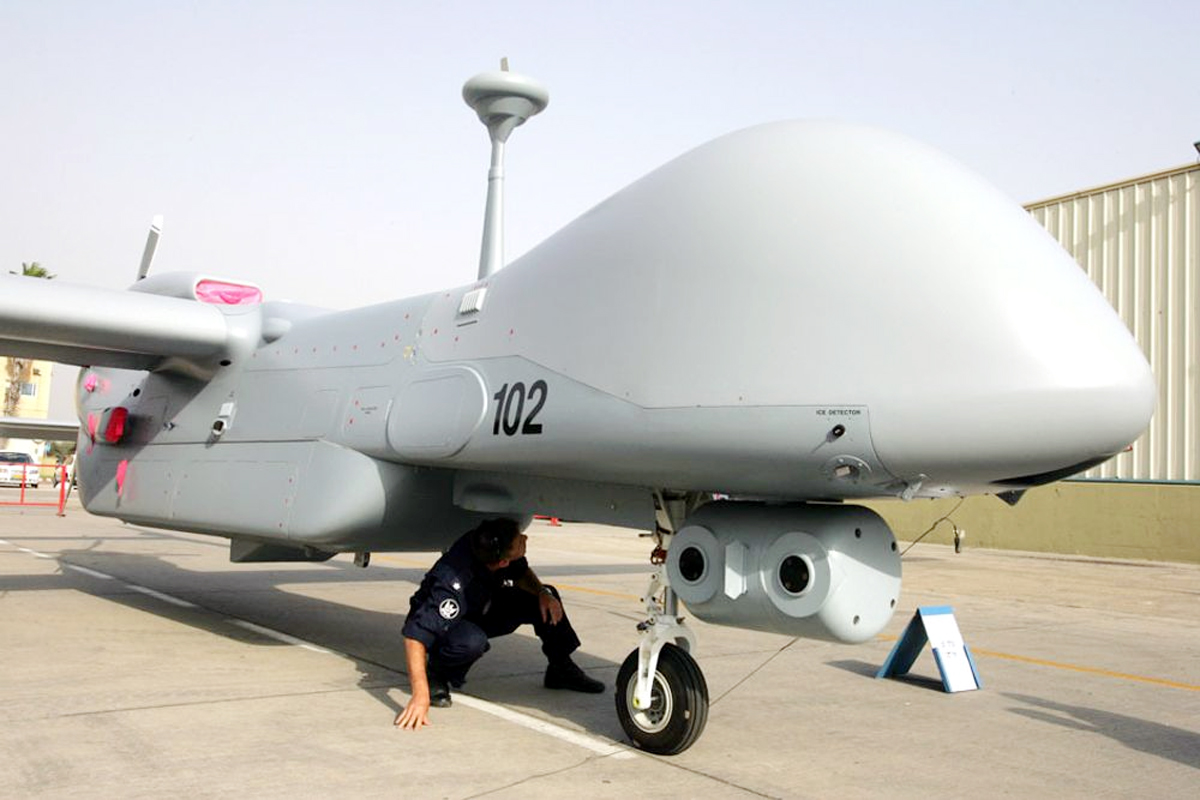Capable of carrying out strikes, surveillance
*RPAs too deployed in Eastern Ladakh
Sanjeev Pargal
JAMMU, Aug 13: The Indian Air Force (IAF) has inducted Haron Mark-2 drones along the borders with China and Pakistan with a view to boost its strength on both frontiers as the drone has capability to carry out strikes as well as surveillance and keep the enemy well under check.
Haron Mark-2 can be equipped with long range missiles and other weapon systems to carry out strikes deep inside the enemy’s territory. They also have satellite communication capability which gives long desired capability to the IAF as they can operate at very long distances for nearly 36 hours at a stretch. They can also laser illuminate enemy targets from long range to help fighter aircraft to destroy them using their long-range weapons, sources said.
As of now, they said, four new Heron Mark-2 drones have been deployed at a forward air base in the Northern sector.
The drone, they added, can operate in any weather and any terrain to hit targets and complete the mission.
Besides, the IAF had also deployed a sizeable number of Remotely Piloted Aircrafts (RPAs) in the Eastern Ladakh to keep a hawk-eye vigil on Chinese activities.
“Deployment of new drones will help IAF along both Line of Actual Control (LAC) with China as well as Line of Control (LoC) with Pakistan in case of any misadventure by the adversaries,” the sources said.
Describing Heron Mark 2 as a very capable drone, they said besides strike rate its surveillance is also very powerful which can help IAF to great extent along the frontiers.
They added that longer endurance of the drones ensures that multiple missions can be flown and multiple sectors can be addressed in one mission itself.
“The drone simply amalgamates into the Intelligence, surveillance, and reconnaissance matrix of the Indian Air Force,” they said.
Haron Mark-2, as per the sources, can provide 24×7 surveillance of targets as it has been equipped with modern avionics and engines.
Major advantage of the drones is that they can be equipped with different types of weapons including air-to-ground missiles, air-to-ground anti-tank weapons, and bombs.
“The payloads and the onboard avionics of the Heron Mark 2 can operate at sub-zero temperatures and in any weather condition. This is helping the Indian Air Force achieve footprints over any type of terrain,” the sources said.
The Indian Air Force is also working on Project Cheetah, under which around 70 of the Indian Armed Forces’ Heron drones are to be upgraded with satellite communication links and weaponised to meet the requirements of the armed forces.
The Indian Armed Forces are also getting 31 Predator drones, which are in the high altitude, long endurance category and are helping the Navy presently to cover large tracts of the Indian Ocean region.
Meanwhile, over 68,000 Army soldiers, around 90 tanks and other weapon systems were airlifted by the Indian Air Force to eastern Ladakh from across the country for rapid deployment along the Line of Actual Control (LAC) after the deadly clashes in the Galwan Valley in Eastern Ladakh which has completed over three years.
The IAF deployed its Su-30 MKI and Jaguar jets for round-the-clock surveillance and intelligence gathering on the enemy build-up, besides putting several squadrons of combat aircraft in “offensive posturing” following the clashes on June 15, 2020 that marked the most serious military conflict between the two sides in decades, they said.
The IAF aircraft airlifted multiple divisions of the Indian Army, totalling over 68,000 troops, more than 90 tanks, nearly 330 BMP infantry combat vehicles, radar systems, artillery guns and many other equipment after the Galwan clashes.
A number of fighter jets, including Rafale and Mig-29 aircraft, were deployed for combat air patrol while various helicopters of the IAF were pressed into service for the transport of prefabricated structures, ammunition and spares of military equipment to mountainous bases.
The sources said the range of surveillance by Su-30 MKI and Jaguar fighter jets was around 50 km and they ensured that the positions and movements of Chinese troops were accurately monitored.
The Government has been giving a major push to infrastructure development along the nearly 3,500 km long LAC following the Eastern Ladakh faceoff.
The Defence Ministry has already initiated work on enhancing the overall infrastructure at the Nyoma Advanced Landing Ground (ALG) in Eastern Ladakh so that all kinds of military aircraft can operate from it.


